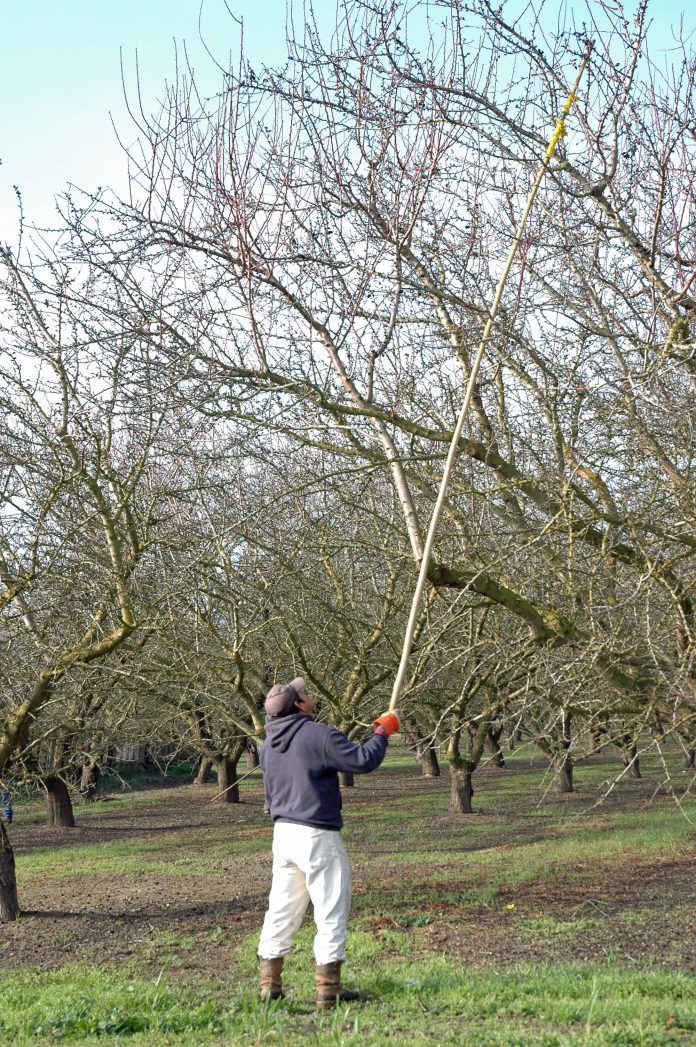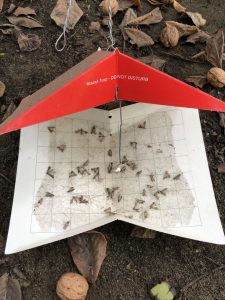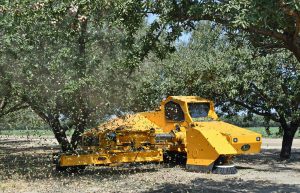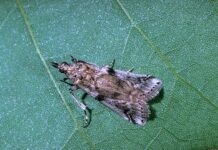
Making critical decisions on crop inputs has become a lot tougher since 2020.
And frugality isn’t the best answer, according to experts. Instead, growers should look at maximizing orchard productivity, ask questions, try new technologies and approaches, focus on the long term and stay positive.
Decisions on crop inputs may be painful for growers, Josette Lewis, ABC’s chief scientific officer, said, but seeking out new information on how to maximize productivity while managing crop inputs in tough markets will pay off in the long run.
Re-thinking traditional approaches to pollination, fertigation, pest control and other crop inputs which have significantly increased in cost since 2020 can help with returns.
Weighing beehive stocking rates in self-fertile almond varieties with potentially higher yields is one area growers may consider. Fertigation, critical to productivity but painful due to higher costs, is another area where new research on crop demand and timing may save money.
“Conventional knowledge is not consistent with new research,” Lewis noted. “Smaller, frequent doses have a bigger impact.”
Adjusting for variability in orchards and maintaining irrigation systems does add to labor costs, Lewis added, but it pays with increased fertilizer efficiency.
Pete DeBoer with Yara USA said the two main questions he hears from growers are, “Why does fertilizer cost so much?” and “When will it get back to normal?”

Practical Approaches to Saving on Fertilizer Costs
Reflecting on the global chaos that ensued during the pandemic, retaliatory tariffs and global conflict, DeBoer said that even with challenges, there are practical approaches to saving on fertilizer costs.
California agriculture relies mostly on outside sources for fertilizer products, DeBoer said. Conflict in Ukraine has had a big impact on supply and is the reason for sustained increase in costs. Input costs have all increased since 2020 and speculating about the next year isn’t possible. Growers will have to weather the market and maintain productivity.
“Things that can’t continue forever, won’t” DeBoer said.
Despite challenges with fertilizer, DeBoer said that maximizing productivity should be the goal. Growers with questions about implementing plans should look at research and new technologies for answers. Yara, he noted, has a research farm where the company is attempting to validate crop applications and assist growers.
“There is a lot of knowledge in the industry; tap into it,” he advised.
Pest control, particularly navel orangeworm control, can be one of the biggest input costs in almond production. Doing it right protects yield and crop quality.

Sanitation Can’t be Ignored
Justin Nay, an independent crop consultant and PCA who heads Integral Ag Inc., said winter sanitation is the one step in NOW control that cannot be ignored. Once there is some moisture in the trees, shaking and destroying mummy nuts should commence.
Sampling mummy nuts for NOW levels in the orchard should also be done in December.
NOW mummy infestation for all varieties of almonds combined was below 0.1 in 2020, and the 16-year average is about 0.20 or 20 worms in 100 mummies.
Nay’s NOW math 101 showed that at 2 mummies per tree, sampling 100 trees per acre with .2 worms per mummy equaled 40 worms per acre. Nay’s calculations showed how to determine the level of NOW larvae per acre and the total female NOW per acre. Performing the calculations, he said, can assist in a more efficient allocation of resources on sanitation based on NOW infestation and variety. Finding a small number of female NOW per acre shows effectiveness of sanitation.
Nay noted that in his experience, the Padre variety can have the highest larvae count and advised sampling early in the winter to establish a baseline.
If a grower wants to save on sprays, he said, they should target the worst infestation areas. Each ranch will experience a different flight pattern due to environmental conditions. Humidity drives NOW development, Nay said.
Peterson traps are a good monitoring tool for mated females. But Nay noted that more females per trap is not better; it means you are pushing the system too far.
For better return on investment on NOW management decisions. Nay said to spend money on sanitation. Monitor to determine spring population size and base spray decisions on that. Use mass trapping to assist sanitation, provide information on population size and kill moths.
“Focus spending more specifically. ‘Do I have to spray in May?’ Confirm with traps.”
Understanding the Benefits of Costs
Lucas Avila, area manager for Farmland Management Services, addressed labor and equipment inputs and said understanding the benefits of the costs over the long term is important.
Assessing your farming practices, what you are doing well or what isn’t working and speaking with neighboring growers about their decisions is a way to help with making management decisions, Avila said. Driving returns may have been easy in the past and mistakes in management could be overlooked. Now, making the right decision on inputs is critical.
“Maybe you can be better at spray calculations, maybe be more careful about who is operating machinery. Be humble and look at your mistakes,” Avila said.
When making decisions on equipment and fertilizers, growers need to do the math to determine long-term benefits to their operations. With nutrients, matching soil type with formulations is critical. For automated fertilizer injection, calculations need to be spot-on.
“Talk to the experts. There is too much knowledge in the industry to keep making mistakes,” Avila said. “Use the resources in the industry.”
UCCE Agriculture and Resources Economist Brittney Goodrich told growers that tighter margins mean maximizing yields may no longer be optimal. Goodrich, who said updated Almond Cost Studies will be available this year, noted that since 2019, prices were down about 30% while input prices were up across the board. Nitrogen was up 171%, herbicides 127% and fuel 48%.
“With tighter margins, you have to think critically to maximize profit, maybe not yields,” Goodrich said.
Crop insurance could be affected by some management decisions. In 2022, 72% of almond acreage was insured by USDA-RMA, Goodrich said. As crop insurance policies are based on prior year’s production , reducing target yields will reduce actual production history and level of yield that can be insured in future years. Growers in the USDA-RMA Almond Crop Provisions also must report any changes in practices or other circumstances that may reduce yields below the yield on which insurance guarantee is based.
That means, Goodrich explained, if you lower hive density during pollination to save costs, that could influence yield.
Goodrich also outlined a NOW IPM program comparison decision tool that is in development. It allows for a cost/benefit comparison of different NOW IPM programs.
One program uses winter sanitation and a spring and hull split insecticide application. The other uses winter sanitation, mating disruption and a hull split pesticide application. Changing from the first to the second holds NOW damage at the same level but costs $43 more per acre with no change in revenue.
Under the second program, costs increase by $43 per acre, but the revenue increases by $67 due to a lower reject level with a net gain of $24 per acre. This comparison tool will also be available to growers in 2023.











